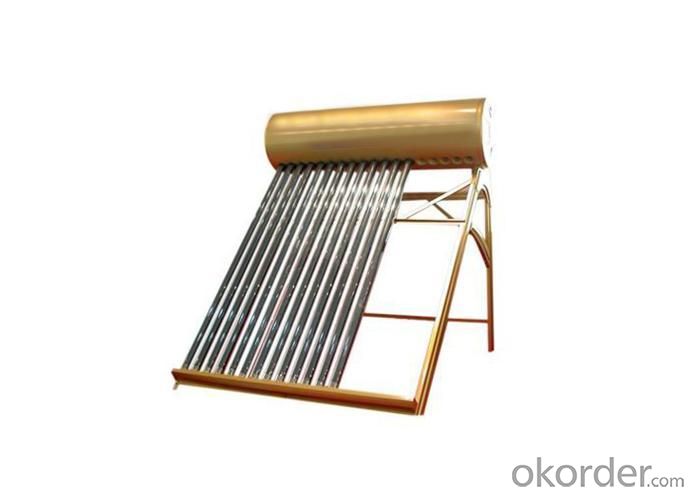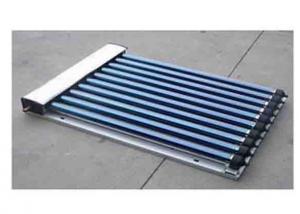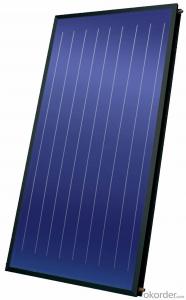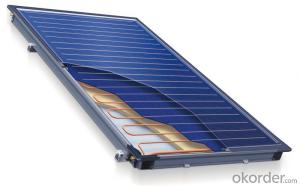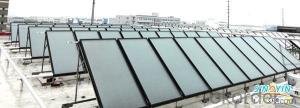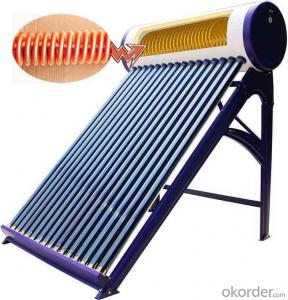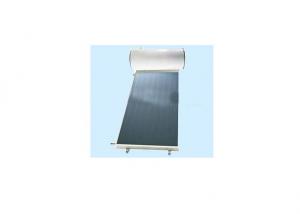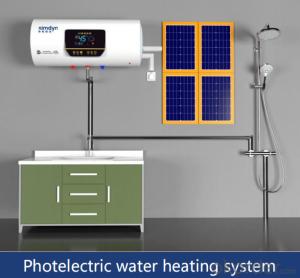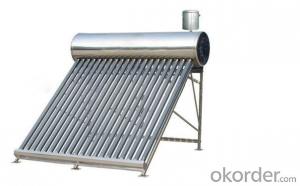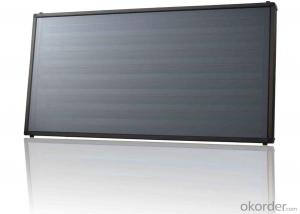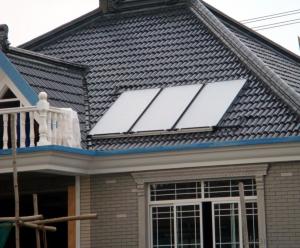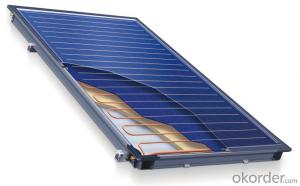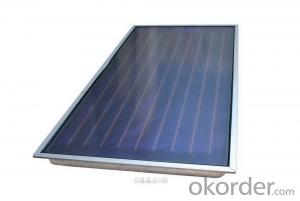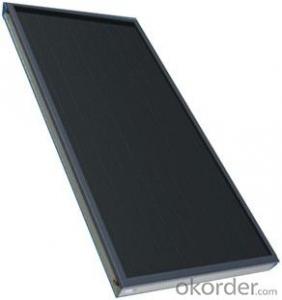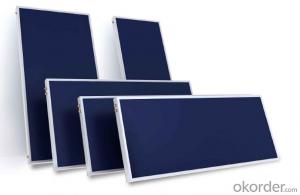Htp Solar Collectors Solar Energy Water Heater
- Loading Port:
- China Main Port
- Payment Terms:
- TT or LC
- Min Order Qty:
- 5 Sets set
- Supply Capability:
- 60,000 Sets per Year set/month
OKorder Service Pledge
OKorder Financial Service
You Might Also Like
solar energy water heater,solar heating system,vacuum tube solar water heater:for household,school,enterprise,government,swimmin
Specifications:
1) Tank
a) Outer Tank material: galvanized armor plate.
b) Inner Tank material: imported SUS304-2B food grade stainless steel.
c) Water Tank Diameter: Φ410/420/460/470/480/500/520mm.
d) Insulating layer: 55-60mm polyurethane foame.
e) Tank Capacity: 90/110/150/180/200/210/240/300/350L.
2) Vacuum tube
a) Dimension: Φ47*1500mm/Φ58*1800mm.
b) Material: high boron silicon 3.3 glass.
c) Qty: 16/18/20/24/30/36 pcs.
d) Hail resistance diameter: Φ25mm
e) Tube coating: by AL-N-AL or ALN/AIN-SS/CU.
3) Bracket
a) Material: color armor plate.
b) Thickness: 1.5mm.
c) Obliquity: from 38o to 45o .
4) Certificates: ISO9001:2000,CCC,CE
- Q: How much space is required for installing solar collectors?
- The amount of space required for installing solar collectors can vary depending on the size and type of the collectors. Typically, for residential installations, a minimum roof space of around 100-200 square feet per collector is recommended. However, it is best to consult with a solar installer to determine the exact space requirements based on your specific needs and the available sunlight in your area.
- Q: How do solar collectors perform in extreme weather conditions?
- Solar collectors are designed to withstand extreme weather conditions. They are built with durable materials that can resist harsh temperatures, strong winds, and heavy snowfall. Additionally, their design allows for self-cleaning and efficient heat transfer, ensuring optimal performance even in adverse weather conditions.
- Q: What is the impact of temperature variations on the performance of solar collectors?
- Temperature variations can have a significant impact on the performance of solar collectors. Higher temperatures can increase the efficiency of solar collectors, as they enhance the conversion of sunlight into heat or electricity. However, excessive heat can also lead to a decrease in performance, as it can cause overheating and reduce the efficiency of the system. On the other hand, colder temperatures can decrease the overall performance of solar collectors, as it reduces the amount of available sunlight and can affect the fluid circulation within the system. Therefore, maintaining optimal temperature conditions is crucial for maximizing the performance and efficiency of solar collectors.
- Q: Can solar collectors be used for industrial purposes?
- Yes, solar collectors can be used for industrial purposes. They can be employed to generate heat or electricity for various industrial applications such as heating water, powering machinery, or providing energy for manufacturing processes. Solar thermal systems, which use solar collectors, are particularly useful in industries that require significant amounts of heat, such as food processing, chemical production, or textile manufacturing. Additionally, solar photovoltaic (PV) systems can be utilized to generate clean electricity for industrial operations, reducing reliance on fossil fuels and lowering carbon emissions.
- Q: Can solar collectors be used for heating warehouses and distribution centers?
- Yes, solar collectors can definitely be used for heating warehouses and distribution centers. Solar thermal systems can capture sunlight and convert it into heat energy, which can then be used to warm up the indoor spaces. By installing solar collectors on the roof or walls of these facilities, the captured heat can be utilized for space heating, water heating, or even for powering absorption chillers for air conditioning. This not only reduces the dependence on traditional heating methods but also helps in reducing greenhouse gas emissions and energy costs.
- Q: Can solar collectors be used for heating poultry farms?
- Yes, solar collectors can be used for heating poultry farms. Solar thermal systems can provide heat for poultry farms by capturing sunlight and converting it into heat energy. This can help maintain optimal temperatures inside the poultry houses, ensuring the well-being and productivity of the birds.
- Q: Can solar collectors be used in paper mills?
- Yes, solar collectors can be used in paper mills. Solar collectors, also known as solar thermal systems, are designed to capture solar energy and convert it into heat. This heat can be used in various industrial processes, including those involved in paper production. Paper mills require large amounts of energy for various operations such as drying, bleaching, and heating water. By utilizing solar collectors, paper mills can significantly reduce their reliance on traditional fossil fuel-based energy sources and decrease their carbon footprint. Solar collectors can be integrated into the paper mill's existing infrastructure, such as the boiler system, to provide thermal energy for steam generation or hot water supply. Additionally, solar collectors can be used to preheat water before it enters the boiler, reducing the amount of fuel needed to reach the desired temperature. The installation of solar collectors in paper mills not only helps in reducing energy costs but also provides a sustainable and environmentally friendly solution. It allows paper mills to tap into a renewable energy source, reducing greenhouse gas emissions and conserving natural resources. While solar collectors can be a viable option for paper mills, it is important to consider factors such as the availability of sunlight, the space required for installation, and the specific energy requirements of the facility. A thorough feasibility study and cost-benefit analysis should be conducted to determine the practicality and potential benefits of incorporating solar collectors into a paper mill's operations.
- Q: Can solar collectors be used for heating sports fields?
- Yes, solar collectors can be used for heating sports fields. Solar collectors, such as solar thermal panels or solar air heaters, can harness the energy from the sun to heat water or air. This heated water or air can then be circulated through a system of pipes or vents, providing warmth to the sports field. This can be particularly beneficial in colder climates or during winter months, allowing for extended use of sports fields regardless of the outside temperature.
- Q: Can solar collectors be used for heating concert venues?
- Yes, solar collectors can be used for heating concert venues. Solar thermal systems can be installed to capture and convert sunlight into heat energy, which can then be used to warm up the indoor spaces of concert venues. This sustainable heating method can reduce the reliance on traditional heating systems, lower energy costs, and contribute to environmental conservation.
- Q: How do solar collectors affect the overall energy efficiency of a building?
- By harnessing the sun's power, solar collectors have the ability to greatly enhance a building's overall energy efficiency. They achieve this by generating clean and renewable energy, thus reducing the dependence on traditional fossil fuels. Consequently, this reduces the building's carbon footprint and aids in combating climate change. Solar collectors possess the capability to convert sunlight into thermal energy, which can be used for various purposes, including water heating and space heating. This obviates the need for conventional heating methods, which often rely on non-renewable energy sources. Consequently, solar collectors have the potential to significantly decrease energy consumption and lower utility bills. The incorporation of solar collectors into a building's energy system also augments its energy independence. By producing their own clean energy, buildings can reduce their reliance on the grid, particularly during peak demand periods. Consequently, this enhances the resilience and dependability of the building's energy supply. Moreover, solar collectors are typically installed on the roof or facade of a building, effectively utilizing previously unused space. This dual-purpose approach enables the efficient utilization of land or rooftop areas, making them particularly suitable for urban environments with restricted space. Additionally, solar collectors can also serve as passive shading devices, diminishing the necessity for air conditioning in warmer climates. Overall, solar collectors exert a positive influence on a building's energy efficiency. They mitigate greenhouse gas emissions, decrease energy consumption, reduce dependence on the grid, and make efficient use of available space. By harnessing the sun's power, solar collectors contribute to a more sustainable and environmentally friendly building design.
1. Manufacturer Overview
| Location | Zhejiang,China |
| Year Established | 2005 |
| Annual Output Value | US$2.5 Million - US$5 Million |
| Main Markets | North America South America Eastern Europe Southeast Asia Africa Oceania Mid East Eastern Asia Western Europe Central America Northern Europe Southern Europe Domestic Market |
| Company Certifications | ISO9001:2008;ISO14001:2004 |
2. Manufacturer Certificates
| a) Certification Name | |
| Range | |
| Reference | |
| Validity Period |
3. Manufacturer Capability
| a) Trade Capacity | |
| Nearest Port | Shanghai,Hangzhou |
| Export Percentage | 41% - 50% |
| No.of Employees in Trade Department | 6-10 People |
| Language Spoken: | English, Chinese |
| b) Factory Information | |
| Factory Size: | 5,000-10,000 square meters |
| No. of Production Lines | 5 |
| Contract Manufacturing | OEM Service Offered Design Service Offered Buyer Label Offered |
| Product Price Range | Average |
Send your message to us
Htp Solar Collectors Solar Energy Water Heater
- Loading Port:
- China Main Port
- Payment Terms:
- TT or LC
- Min Order Qty:
- 5 Sets set
- Supply Capability:
- 60,000 Sets per Year set/month
OKorder Service Pledge
OKorder Financial Service
Similar products
Hot products
Hot Searches
Related keywords

